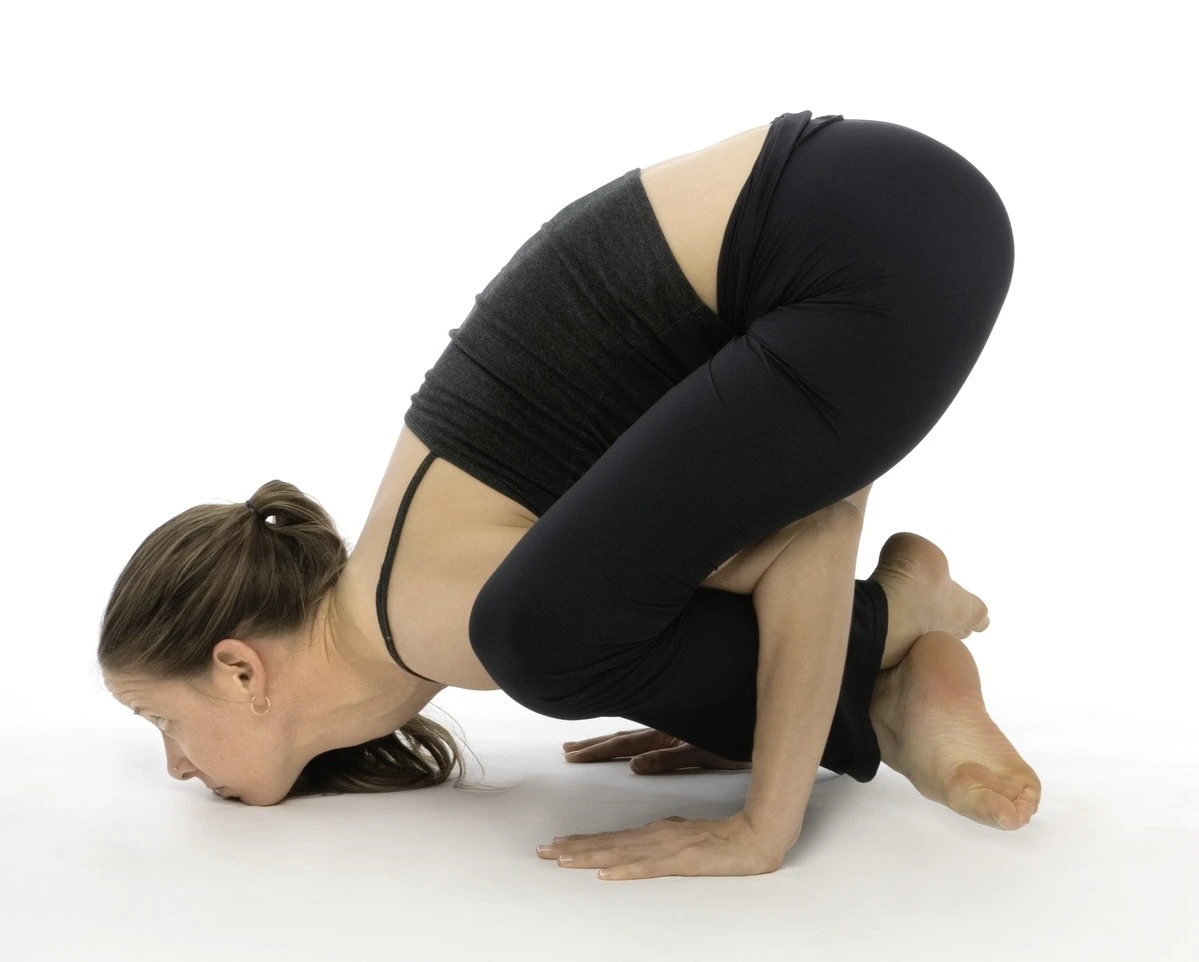
Bhujapidasana: Arm Pressure Posture by Caroline Klebl
Bhujapidasana: The Arm Pressure Posture in the Primary Series of Ashtanga Yoga
In the Primary Series of Ashtanga Yoga, one of the standout postures is Bhujapidasana, also known as Arm Pressure Pose. This posture, found in the primary series after Navasana (boat pose), is an advanced balancing asana that combines strength, flexibility, and focus. Its name, Bhujapidasana, derives from Sanskrit where “bhuj” (भुज) means “arm,” “pida” (पीड) means “pressure,” and “asana” (आसन) refers to “posture” or “seat.” In essence, it translates to “Arm Pressure Pose,” as the posture requires pressing your legs against the upper arms while balancing on your hands.
How to Practice Bhujapidasana
1.Start in Adho Mukha Shavansana (downward facing dog pose):
On the exhale hop forward around the arms. Place the legs high on the upper arms.
2.Wrap the Legs Around the Arms:
Shift your weight into the hands, wrap your legs around your arms and cross the right foot over the left foot. Straighten the arms and balance on the hands.
3.Place the head or chin on the floor:
Bend the elbows and lower the top of your head or chin onto the floor. Reach the feet back between the legs and point your toes back.
4.Gaze toward the nose:
Keep your gaze toward the top of the nose (not down), as this helps maintain your focus and prevents your body from collapsing or tipping over.
5.Breathe Deeply for five breaths:
Like with all Ashtanga postures, continue to breathe deeply and steadily. Don’t hold your breath, as the breath is the key to maintaining energy and stability throughout the practice.
Benefits of Bhujapidasana
•Strengthens the Arms and Shoulders: The pressure of the arms against the legs, combined with the balancing act, builds upper body strength.
•Improves Core Stability: Lifting the feet off the ground requires significant core activation, helping to strengthen the abdominals and improve overall balance.
•Increases Flexibility in the Hips: Pressing the upper thighs into the arms helps open up the hips and groin, enhancing flexibility in this area.
•Boosts Concentration and Mental Focus: Balancing on your hands while maintaining alignment requires deep concentration and focus, which helps calm the mind.
•Enhances Balance and Coordination: As a balancing posture, Bhujapidasana challenges the practitioner’s ability to maintain stability and control while engaging multiple muscle groups.
Tips for Success
•Start Slow: Bhujapidasana can be challenging, especially for those new to balancing postures. Begin with smaller attempts, gradually lifting your feet as you build strength and confidence.
•Use the Core: Engage your core muscles to help you lift off the ground and maintain balance. A strong core is essential for maneuvering in and out of the posture.
•Check Your Alignment: Ensure your legs are pressing firmly into your arms, and your hands are placed shoulder width apart on the floor. If your wrists are straining, spread your fingers wider and press the entire palm of the hand into the floor.
•Don’t Rush: Mastery of Bhujapidasana takes time. Practice regularly and listen to your body. It’s important to practice all of the posture in the primary series prior to Bhujapidasana, before practicing Bhujapidasana.
Common Mistakes to Avoid
•Collapsing in the Chest: It’s common for practitioners to collapse the chest when attempting Bhujapidasana. Keep your chest open and maintain a firm engagement in the core.
•Straining the Wrists: If you feel strain in your wrists, adjust the placement of your hands and focus on the postures prior to Bhujapidasana.
Bhujapidasana in the Context of the Primary Series
In Ashtanga Yoga, the Primary Series (Yoga Chikitsa) is designed to align the body and mind, while Bhujapidasana specifically helps in building the strength and flexibility necessary for subsequent poses. It’s a balancing posture that challenges both the physical and mental aspects of your practice, preparing you for more advanced poses.
As a key part of the sequence, Bhujapidasana teaches patience, perseverance, and focus—qualities that are essential in the journey of Ashtanga Yoga. Whether you’re working on developing arm strength, improving balance, or simply improving your practice, this posture offers significant growth and transformation.
Learn Bhujapidasana with Caroline Klebl
You can learn Bhujapidasana and deepen your practice by joining Caroline Klebl’s Yoga Teacher Training in Los Angeles, at beautiful destinations around the world, or even online. Caroline’s training provides expert guidance and personalized feedback to help you master challenging poses like Bhujapidasana. Enroll today to begin your journey towards becoming a skilled and confident yoga practitioner.
Conclusion
Bhujapidasana is a dynamic and rewarding pose that improves your strength, flexibility, and focus. Like many other postures in the Ashtanga Primary Series, it requires patience and consistent practice to master. By incorporating Bhujapidasana into your practice, you will build the necessary physical and mental discipline to move deeper into your Ashtanga journey.
